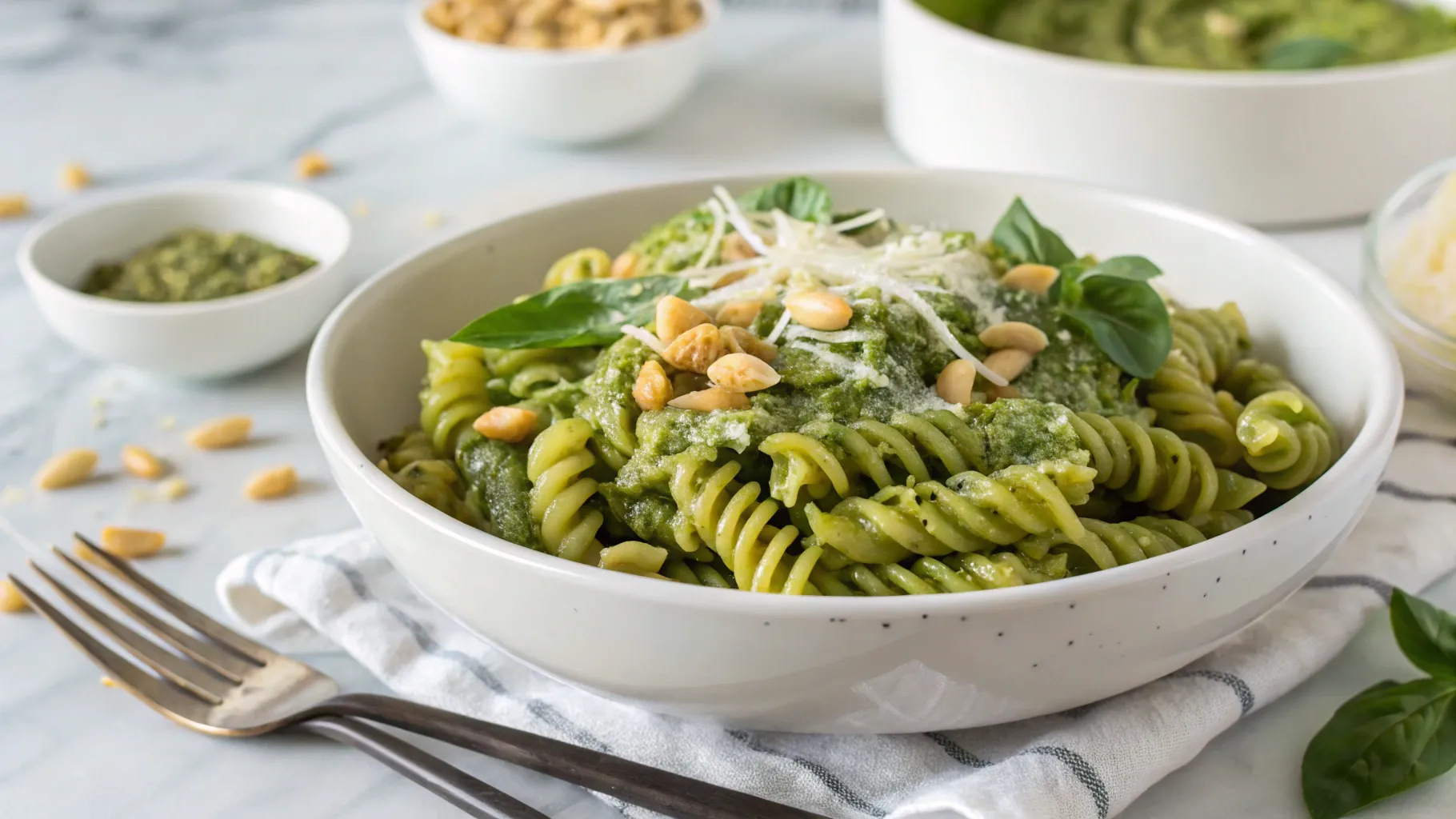If there’s one dish that perfectly balances bold flavor with simplicity, it’s pesto pasta. From its velvety green sauce to its herbaceous aroma, this Italian-inspired favorite is a must-have in any home cook’s repertoire. Whether you’re preparing a quick weeknight dinner or crafting a crowd-pleasing side, pesto pasta is your shortcut to something vibrant, rich, and deeply satisfying.
What makes it even more special? It requires just a handful of fresh, wholesome ingredients, many of which you probably already have. And best of all, you can tailor it to your dietary needs without sacrificing flavor. Whether you’re going dairy-free, gluten-free, or nut-free, there’s a pesto variation for everyone.
If you are hungry for more comforting, flavor-packed dishes, we’ve got you covered. Try this hearty and cheesy eggplant Parmesan pasta for a satisfying vegetarian twist on Italian comfort food. Craving something even simpler? These garlic butter noodles are a quick, crowd-pleasing option that highlights similar flavors with just a few pantry staples. And for a fresh take on pesto, these sweet potato rounds with burrata, beets & pesto make for a beautiful appetizer or light lunch, perfect for using up leftover sauce.
The Origins of Pesto Sauce
Before pesto became a weeknight staple in kitchens around the world, it was, and still is, a cornerstone of Ligurian cuisine in Italy. The classic version, known as Pesto alla Genovese, originates from the coastal city of Genoa.
Traditional Ingredients:
- Fresh basil leaves (preferably Genovese DOP)
- Pine nuts
- Garlic
- Parmigiano Reggiano or Pecorino cheese
- Coarse sea salt
- Extra virgin olive oil
Traditionally, pesto is made using a mortar and pestle, which helps preserve the texture and aroma of the basil. While a food processor is more convenient, purists argue it slightly dulls the flavor, though both methods yield delicious results.
💡 Pro tip: What makes pesto unique is its raw, no-cook preparation, preserving the bright flavors of its ingredients.
Types of Pesto Used in Pasta
While basil pesto is the most well-known, there’s an entire world of flavorful pesto variations beyond the traditional green sauce. Whether you’re looking to match seasonal ingredients, adjust for allergies, or try a bold new flavor, there’s a pesto to suit every taste and dietary need.
What’s especially wonderful about pesto is its versatility, many variations can be whipped up in minutes, customized based on what’s in your fridge, and easily made without cheese, nuts, or dairy. The result? A sauce that remains fresh, vibrant, and totally crave-worthy no matter how you spin it.

Popular Pesto Varieties
Let’s explore the most popular types of pesto used in pasta dishes around the world:
-
Classic Genovese
The traditional Ligurian blend of basil, pine nuts, Parmesan, and olive oil. Rich, aromatic, and timeless. -
Pesto Rosso (Red Pesto)
Made with sun-dried tomatoes, garlic, almonds or cashews, and often a touch of chili for warmth. It’s a deeper, slightly smoky take on pesto. -
Kale or Spinach Pesto
A great winter alternative to basil. These leafy greens offer an earthier, slightly bitter profile. Add lemon juice to brighten it up. -
Arugula Pesto
Known for its peppery kick, arugula adds boldness. A touch of lemon zest or lemon juice helps balance the intensity. -
Nut-Free Pesto
Perfect for allergy-sensitive diets. Swap in pumpkin seeds, sunflower seeds, or omit seeds entirely and rely on garlic, herbs, and olive oil. -
Vegan Pesto
Omit cheese and use nutritional yeast for that cheesy, umami-rich flavor.
💡 Pro tip: If you’re dairy-free or vegetarian, look for hard cheeses made with microbial or plant-based rennet to keep things friendly and inclusive.
Best Pasta Types for Pesto
When it comes to pesto pasta, choosing the right noodle shape isn’t just about aesthetics, it’s about flavor delivery. Because pesto is an oil-based, smooth sauce, it doesn’t stick the same way as creamy or tomato-based sauces. That means certain pasta shapes are better suited to hold on to that flavorful green coating.
The key is to look for grooves, twists, or ridges, anything that gives the sauce something to grip. Whether you’re using a classic basil pesto or a creative variation, your pasta choice can make all the difference in taste and texture.
Top Pasta Picks for Pesto
-
Trofie
The traditional Ligurian pasta for Pesto alla Genovese. These short, hand-rolled twists are ideal for catching every bit of sauce in their tight spirals. -
Fusilli or Rotini
These corkscrew-shaped pastas are pesto’s best friends. Their deep grooves trap the sauce beautifully, making each bite flavorful. -
Linguine or Spaghetti
Smooth, long strands that pair well with thinner pesto sauces. Toss thoroughly with a splash of pasta water to ensure even coating. -
Penne or Farfalle
Great for family meals or picky eaters. Their sturdy shape and hollow centers allow for playful presentation and satisfying bites. -
Gluten-Free Pasta
Varieties made from brown rice, chickpeas, or quinoa tend to hold pesto well due to their slightly rougher surface texture.
💡 Pro tip: Choose pasta with curves or texture to ensure every forkful is coated in that fragrant, herbaceous goodness.
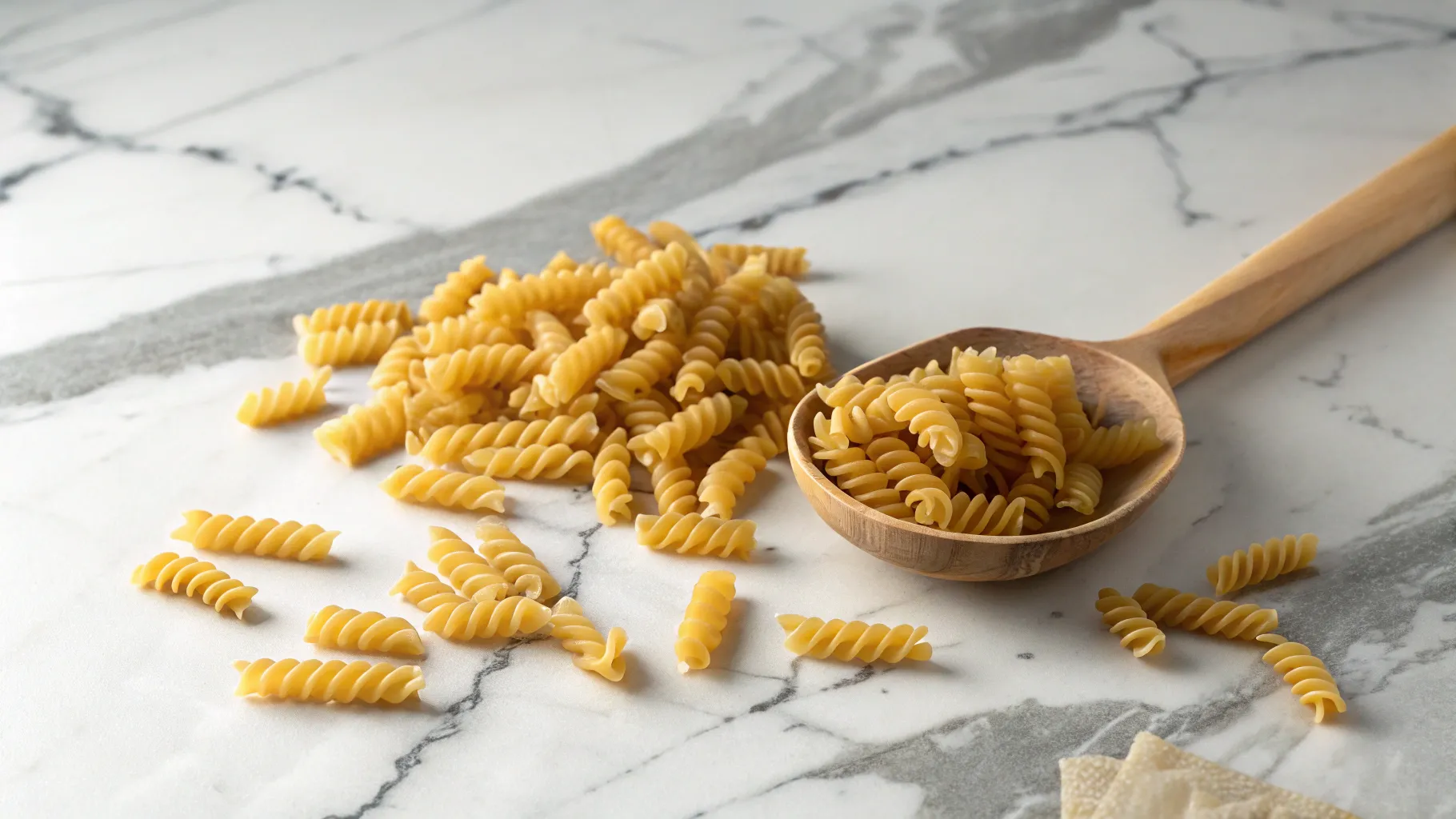
How to Make Pesto Pasta – Step-by-Step
Now let’s get into the method. Making pesto pasta is fast, easy, and endlessly adaptable.
Ingredients:
- 3 cups fresh basil leaves, packed
- 1/3 cup pine nuts (or pumpkin seeds for nut-free)
- 2–3 cloves garlic
- 1/2 cup extra virgin olive oil
- 1/2 cup grated Parmesan or Pecorino (use plant-based if needed)
- Salt to taste
- 12 oz of your favorite pasta
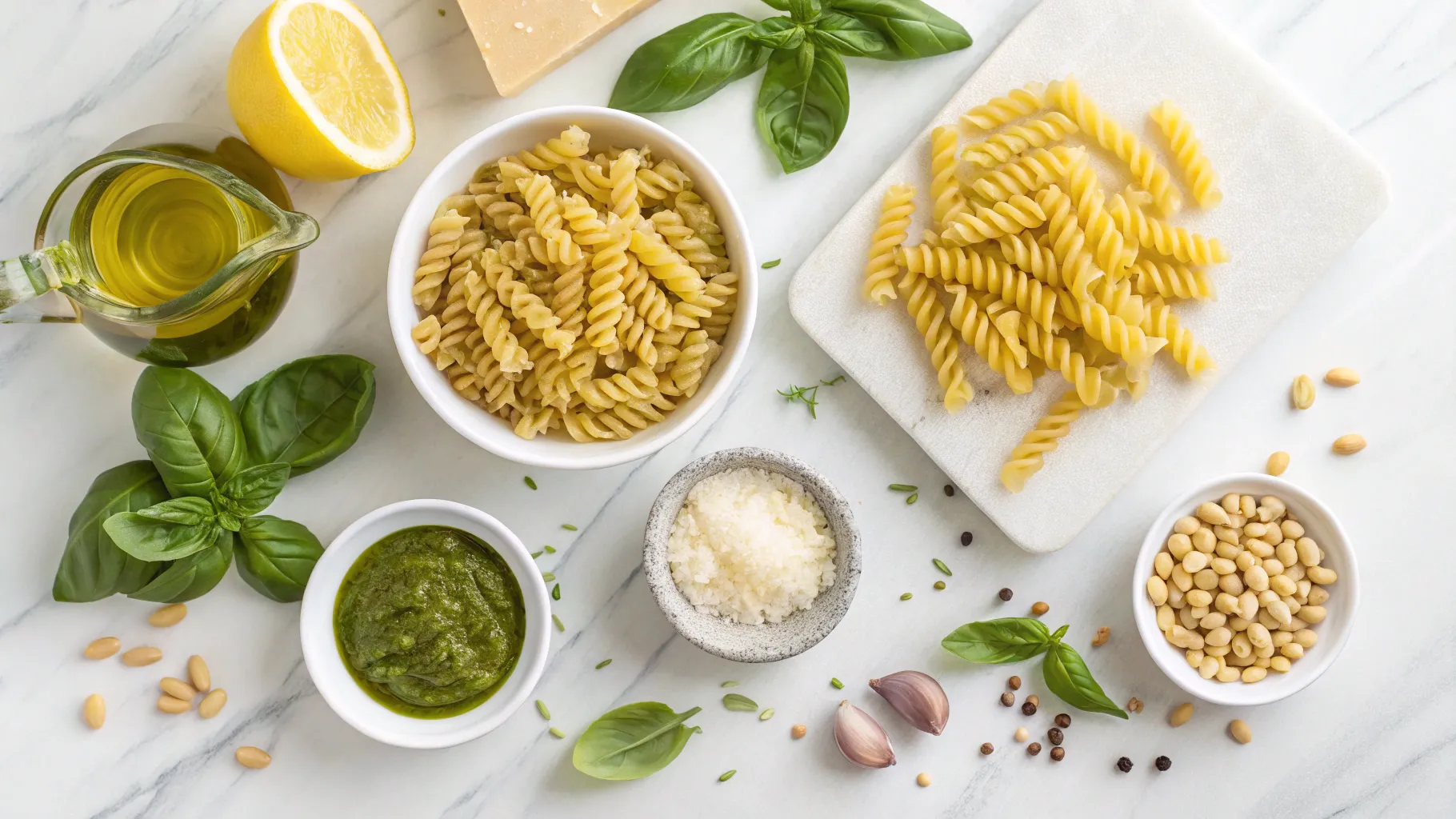
Instructions:
- Cook the pasta in salted boiling water until al dente. Reserve 1/2 cup of pasta water.
- Blend the pesto: In a food processor or blender, pulse basil, nuts, garlic, and cheese. Slowly drizzle in olive oil while blending until smooth but not runny.
- Adjust seasoning with salt and a splash of lemon juice if needed.
- Toss pasta with pesto, adding reserved pasta water as needed to loosen the sauce.
- Serve immediately, topped with extra cheese, pine nuts, or fresh basil.
💡 Pro tip: Adding pasta water helps the pesto cling better to the noodles and adds silkiness to the sauce.
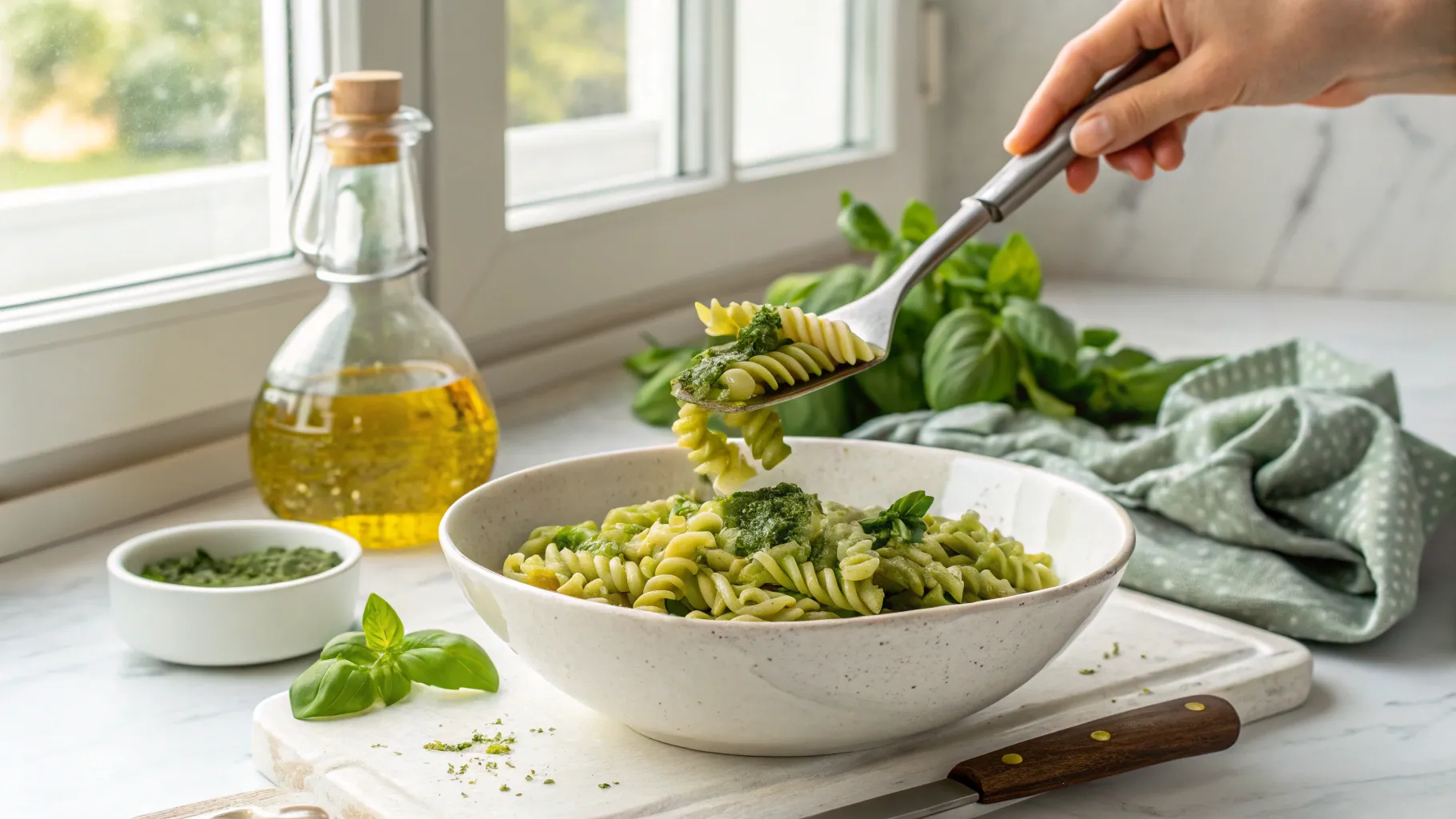
Flavorful Variations of Pesto Pasta
Once you’ve mastered the basic recipe, pesto pasta becomes a blank canvas for endless variations. Whether you’re trying to add protein, go plant-based, or prep a cold pasta salad, there’s a pesto twist for every occasion.
Popular Customizations:
- With grilled chicken or shrimp – add lean protein and turn it into a complete meal
- Vegan pesto pasta – use dairy-free cheese or nutritional yeast for flavor depth
- Cold pesto pasta salad – great for lunchboxes or picnics
- Gluten-free version – made with brown rice pasta and nut-free pesto
- Baked pesto pasta casserole – layer with mozzarella (or vegan cheese) and bake until bubbly
💡 Pro tip: Don’t be afraid to mix in cherry tomatoes, roasted red peppers, or olives for extra color and texture!
What to Serve with Pesto Pasta
Though pesto pasta is satisfying on its own, pairing it with complementary sides can create a well-rounded meal. Choose items that contrast the richness of the sauce with freshness or crunch.
1. Light & Balanced Sides:
- Simple green salad with lemon vinaigrette
- Garlic roasted vegetables – zucchini, bell peppers, cherry tomatoes
- Toasted focaccia or flatbread
- Grilled asparagus or steamed broccoli
- Lemon-mint sparkling water or fruit-infused drinks
💡 Pro tip: A touch of acidity (from lemon or vinegar) brings out the brightness of the pesto even more.
Make-Ahead, Storage & Reheating Tips
Whether you’re meal prepping or storing leftovers, pesto pasta is wonderfully make-ahead friendly. Here’s how to keep it tasting fresh.
1. Storage Tips:
- Refrigerate leftovers in an airtight container for up to 4 days
- Store extra pesto separately in a sealed jar topped with olive oil
- Freeze pesto in ice cube trays for quick use
2. Reheating Tips:
- Reheat pasta gently with a splash of water or olive oil
- Avoid high heat, it can dull the basil and split the oil
- Add a bit of lemon juice or extra cheese before serving to refresh flavor
💡 Pro tip: Homemade pesto stays fresh in the freezer for up to 2 months. Just thaw and toss with hot pasta!
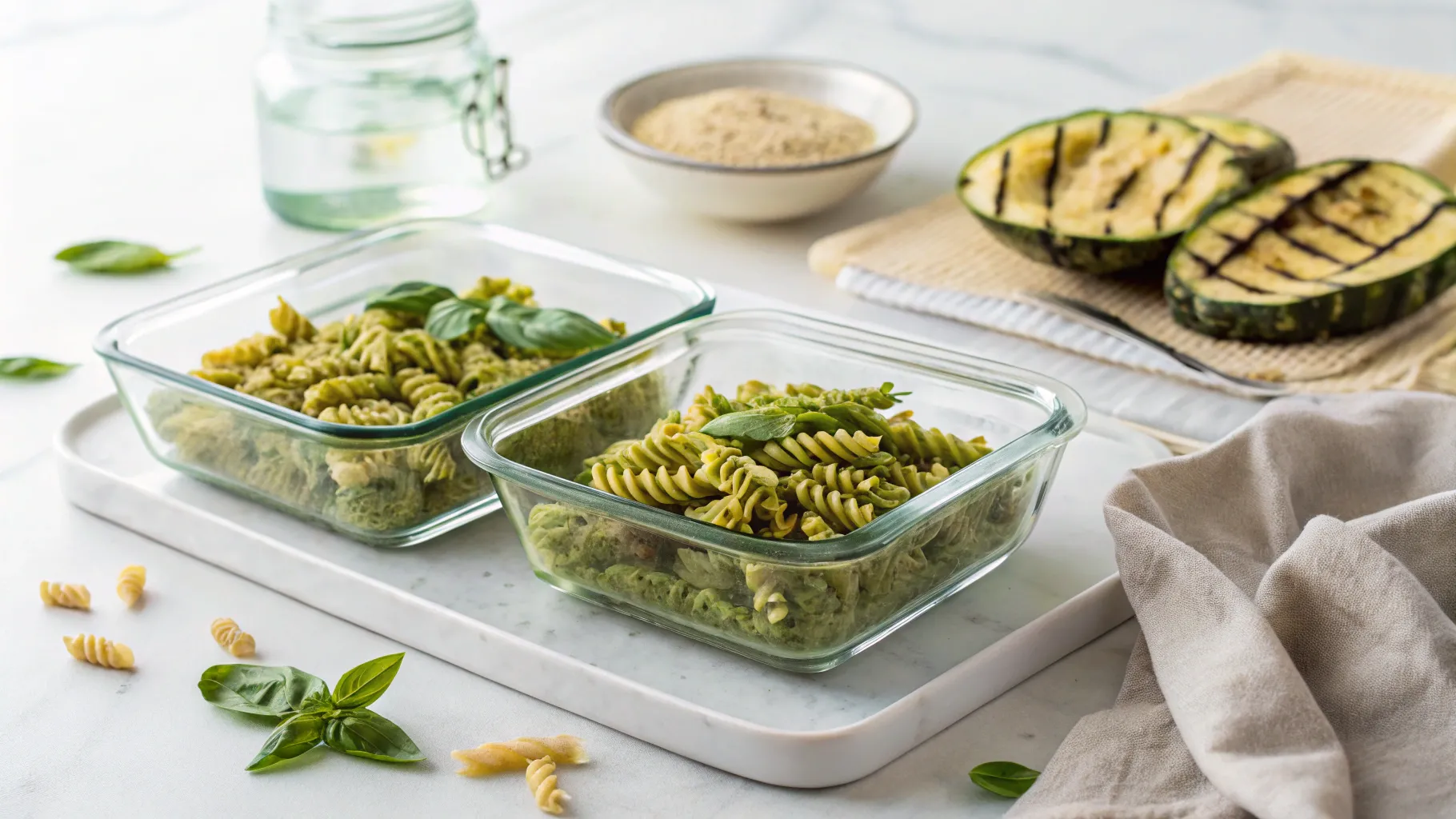
Nutritional Breakdown of Pesto Pasta
A standard bowl of pesto pasta (about 1.5 cups) provides a balance of healthy fats, carbs, and protein, especially when you add veggies or lean protein.
Approximate Values:
- Calories: 400–500
- Fat: 20–30g (mostly from olive oil and nuts)
- Carbs: 40–50g
- Protein: 10–15g
- Fiber: 3–5g
- Sugar: <3g
💡 Pro tip: For a lighter version, use less oil in the pesto or swap pasta for spiralized zucchini (“zoodles”).
Frequently Asked Questions (FAQs)
Q1: Can I make pesto pasta without cheese?
Yes! Use nutritional yeast or a dairy-free cheese alternative to maintain the cheesy depth without using actual cheese.
Q2: What pasta shape works best with pesto?
Trofie, fusilli, linguine, and penne all pair beautifully with pesto. Use textured pasta so the sauce clings well.
Q3: Why does my pesto turn brown?
Oxidation! Use fresh basil, blend with chilled oil, and store with a layer of olive oil on top to keep it vibrant green.
Q4: Is pesto pasta healthy?
Yes, when made with whole ingredients. Use moderate amounts of olive oil, control portion size, and add veggies or protein to balance the dish.
Q5: Can I use dried basil for pesto?
Fresh basil is essential for true flavor and texture. Dried basil won’t work for authentic pesto.
Q6: How long does pesto last?
In the fridge: up to 5 days (with oil layer on top). In the freezer: up to 2 months.
Q7: What nut alternatives can I use in pesto?
Sunflower seeds, pumpkin seeds, or omit nuts entirely for an allergy-safe version.
Q8: Can I serve pesto pasta cold?
Absolutely. It makes a great cold pasta salad, especially with cherry tomatoes and cucumbers.
Final Thoughts
Pesto pasta is proof that fresh, simple ingredients can make something extraordinary. Whether you stick to the classic Genovese blend or explore creative twists, it’s a dish that never goes out of style.
From weeknight dinners to sunny picnic salads, pesto pasta fits every mood, every table, and nearly every dietary need. Just blend, toss, and enjoy a taste of Italy in every forkful.
💡 Enjoyed this recipe?
Follow us for daily kitchen tips and tasty inspiration!
📌 Pinterest | 📘 Facebook | 📸 Instagram
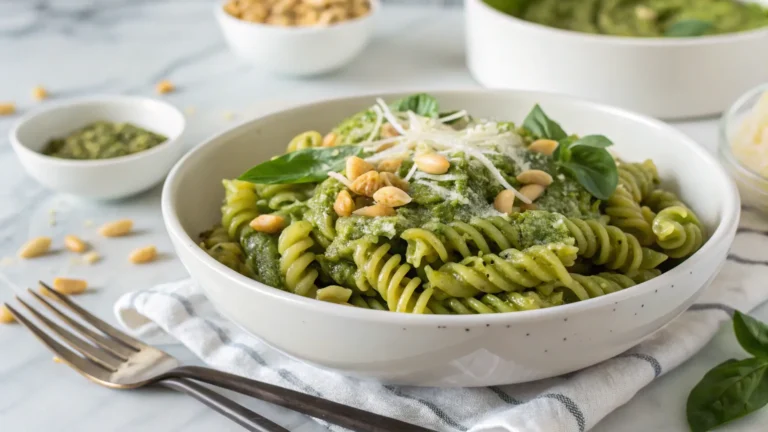
Pesto Pasta – A Green, Garlicky Classic You Can Master
This classic pesto pasta is fresh, fragrant, and full of green goodness, made with basil, garlic, olive oil, and cheese (or dairy-free options). It’s simple to master, endlessly versatile, and perfect for weeknight dinners, meal prep, or special occasions.
- Total Time: 20 minutes
- Yield: 4 servings 1x
Ingredients
- 3 cups fresh basil leaves, packed
- 1/3 cup pine nuts (or sunflower/pumpkin seeds for nut-free version)
- 2–3 cloves garlic
- 1/2 cup extra virgin olive oil
- 1/2 cup grated Parmesan or nutritional yeast (for vegan)
- Salt to taste
- 12 oz pasta of choice (trofie, fusilli, linguine, penne, or gluten-free)
Instructions
- Boil pasta in salted water until al dente. Reserve 1/2 cup pasta water.
- In a food processor, combine basil, nuts, garlic, and cheese.
- Drizzle in olive oil while blending until smooth.
- Toss pasta with pesto and reserved pasta water until well coated.
- Serve immediately with extra cheese, pine nuts, or fresh basil.
- Prep Time: 10 minutes
- Cook Time: 10 minutes
- Category: Main Dish, Pasta
- Method: Stovetop, Blended Sauce
- Cuisine: Italian-Inspired

